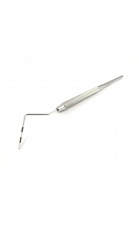Periodontics – Your Best Offense is a Good Defense!
Do you suspect that you have periodontal disease? The good news is that, if you do, the sooner you treat it, the better.
The early stage of gum disease is called gingivitis. If you have gingivitis, your gums may become red, swollen and bleed easily.
At this stage, the disease is still reversible, and can usually be eliminated by a professional cleaning, followed by daily brushing and flossing.
What is periodontal disease?
Meaning “around the tooth,” periodontal disease affects the gums that surround the teeth and the bones that support them. Plaque that is left to build up on teeth eventually changes from a sticky film into tartar (calculus). Together, plaque and tartar start to break down the gums and bone in the mouth. One common symptom of this disease is red, swollen and bleeding gums.
What are the dangers of periodontal disease?
Periodontitis, a severe form of gum disease, doesn’t just cause soft-tissue inflammation and bleeding. It also destroys the bone that supports the teeth. If it progresses unchecked, it can lead to tooth loss, and is even associated with systemic inflammatory conditions like atherosclerosis and rheumatoid arthritis.
How is periodontal disease diagnosed?
Dr. Cancelliere or one of our hygienists can diagnose this disease during a periodontal examination, which is an important part of your regular, routine dental checkups..

A small dental instrument called a periodontal probe is used to measure the space (sulcus) between the teeth and the gums. A healthy sulcus should measure three millimeters or less, and it should not bleed. The probe will indicate if the spaces are deeper than three millimeters. Deeper pockets typically indicate a more advanced stage of the disease. In addition to measuring the sulcus, Dr. Cancelliere will check for inflammation, tooth mobility, and other signs that will help in making a diagnosis or either; Gingivitis, Periodontitis, or, Advanced Periodontitis.
How is periodontal disease treated?
Treatment for periodontal disease is determined by the type and severity of the disease. Your dentist and hygienist will be able to make the best treatment recommendations for your situation.
One or two regular cleanings are typically all that is necessary to clear up the early stages of gingivitis, when there has still been no bone damage. We will also provide you with tips on how to maintain healthy dental habits at home, so the disease does not return.
Scaling and Root Planing
More advanced stages of the disease require scaling and root planning (deep cleaning). Normally, this type of cleaning is done on one quadrant of the mouth at a time, and the area being treated is made numb. This procedure removes tartar, plaque and other toxins from above and below the gum line and on root surfaces. Cleaning out these toxins helps the gums to heal, shrinking the pockets back to a normal size. Depending on the patient, we may also recommend medication, mouth rinses and an electric tooth brush to help clear up the infection.
If scaling and root planning does not clear up the problem, periodontal surgery may be necessary to get the pockets back to a normal size. Reducing the pocket size makes keeping your teeth clean much easier, and Dr. Cancelliere may recommend that you see a specialist in this field.
If plaque is not removed within 24 hours after it forms on your teeth, it turns into tartar. Regular home dental care helps prevent the formation of plaque and tartar, but hard-to-reach places need to be cleaned regularly by Dr. Cancelliere to ensure all plaque build up is removed.
What is maintenance for Periodontal Health?
After receiving treatment for periodontal disease, it’s very important to receive regular maintenance cleanings. These cleanings will provide Drs. Cancelliere the perfect opportunity to check the sulcus and ensure that your teeth and gums are healthy. Plaque and tartar that haven’t been removed by your daily cleaning efforts will be taken care of during this cleaning. You should schedule these check ups about four times a year.


